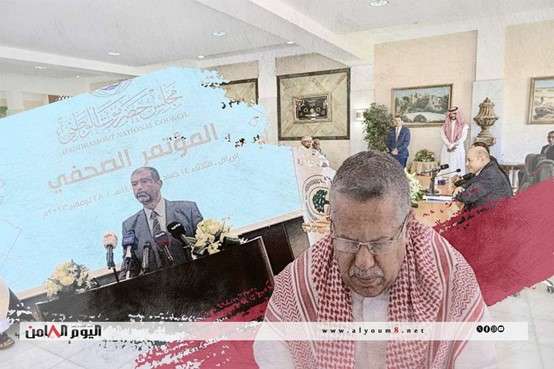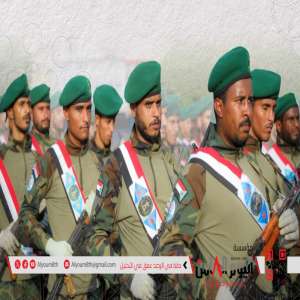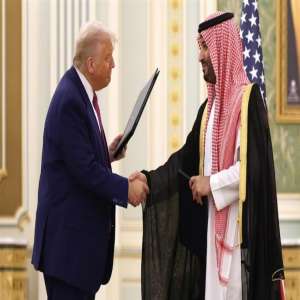Hadramout complains about the government of Moeen Abdulmalik
Saudi Arabia embraces the establishment of regional entities that provide safe havens for al-Qaeda
"The bloody history of Ahmed Obaid bin Dagher, in Hadramawt, prevents him from being chosen as the head of the regional political entity, which is supported by Saudi Arabia, to achieve a giant economic agenda"

Ahmed Obaid bin Dagher is forbidden to head the regional political entity- Alyoum8th
In the Kingdom of Saudi Arabia, which is engaged in negotiations with Iranian proxies in Yemen, it announced the establishment of regional entities, loyal to the Muslim Brotherhood, in the valley and desert of Hadramawt, where Yemeni forces have been stationed since the summer war of 1994, while the United Nations said that the map of Al-Qaeda, the most extreme branch of the global organization, is spread in areas under the control of Yemeni forces; in the valley and desert of Hadramawt, in addition to Marib and Al-Bayda, where the organization is trying to maintain its influence in the governorates of Hadramawt, Marib and Al-Bayda, with the presence of cells Sleeping in al-Mahra and the coast of Hadramawt, while the number of its gunmen ranges from 1,000 to 3,000 terrorist elements.
Saudi-backed regional political entities
Leaders of the Yemeni Muslim Brotherhood announced the formation of a leading body for a regional entity, called the "Hadramawt National Council", months after announcing its establishment in the Saudi capital Riyadh.
International and regional media said that Riyadh, which embraces the regional political entity, seeks to impose pressure on the Southern Transitional Council, which rejects a political settlement, granting the Houthis 80% of the southern resources, but political sources went to describe the move as part of Saudi Arabia's efforts to extend its influence over Hadramawt and Al-Mahra, to achieve the industrial canal project, which connects the Kingdom to the Arabian Sea.
The Presidency of the Hadramawt Council, which was announced at a press conference in Riyadh, included twenty-three members "representing the various components in the province," while consensus was announced on the formation of a supreme body for the Council consisting of two hundred and fifty-one members.
Since the announcement of the establishment of the Hadramawt National Council, southern forces have considered that the step of establishing the new structure is mainly directed at obstructing efforts to restore the southern state that existed before the declared unity in the early nineties of the last century, and that northern Yemeni forces, led by the Muslim Brotherhood, represented by the Yemeni Congregation for Reform, are behind the Hadramawt Council.
The council was established under a political document issued at the end of consultations between Hadrami political and social forces and figures hosted in the Saudi capital, and supervised by Saudi Ambassador to Yemen Mohammed Al Jaber.
The London-based newspaper Al-Arab said that the new regional entity put Hadramawt at the center of a new conflict on a regional basis this time, as critics of the forces and figures who stood behind its establishment do not hesitate that they have narrow regional tendencies, some of which reach the point of demanding the separation of Hadramawt on the basis that they have the various ingredients that qualify them for this, including a large geographical extension, openness to the sea and important oil resources.
In a practical example of Hadramawt's own self-potential, the local authority threatened a few days ago to stop transferring the governorate's financial revenues to the Central Bank of Aden. This came against the backdrop of accusations that the government of Maeen Abdul Malik did not fulfill its obligations to provide basic services to the residents of the province; and the government of Maeen Abdul Malik, which enjoys Saudi support and patronage, which prevented the removal of Maeen Abdul Malik, who is accused of involvement in major corruption cases.
It seems that Riyadh is seeking to impose its conditions on the future independence of the south again, through the establishment of regional entities that it owes allegiance to, within expansionist plans old since the era of British colonization of the south.
Despite the withdrawal of many members of the new regional entity, it was born out of regional projects, which see the Brotherhood, its future ally in the cities of the south, if (all) North Yemen goes to the pro-Iranian Houthis.
The Muslim Brotherhood in Yemen seeks to support the project of isolating Hadramawt in a region, within the project of the state of the six regions, whose constitution - unfinished - allowed the possibility of merging two regions into one region, which opened the way for the annexation of Hadramawt to Marib.
Southern political forces in Hadramawt, most notably the Hadramawt Inclusive Conference, represented by its president, Amr bin Habrish Al-Ali, announced their rejection of the new entity, and Ali apologized for not accepting membership in the new presidential body of the Hadramawt Council, saying via the X platform, "I apologize for not being a member of the Hadramawt National Council, which we saw announced on social media," considering that his position in the presidency of the Hadramawt Tribes Alliance and the Hadramawt Inclusive Conference obliges him to take the same distance from everyone and deal with them independently.
Political sources told Alyoum8th newspaper that the Saudi ambassador to Yemen proposed the name of Ahmed Obaid bin Dagher, head of the regional political entity, given that bin Dagher, has a wide government presence through his presidency of the Yemeni Shura Council.
The sources confirmed that deep differences between the General People's Congress Party, and the Muslim Brotherhood, prevented the selection of a president of the Council, which prompted the Saudi ambassador Mohammed Al Jaber to put forward "Ahmed Obaid bin Dagher", as a figure can be agreed upon, but the history of bin Dagher in Hadhramaut, prevented that, as political forces in Hadramawt reject any role for bin Dagher, known as the issue of "dragging clerics in the province", when he was a socialist.
Al-Qaeda and the sanctuaries of Wadi Hadramout and Marib
A recent report of the experts on Yemen to the Security Council provided new information on the map of the spread of al-Qaeda led by terrorist Khaled Batarfi, who launched in early 2023 an operation called "Arrows of Truth" in response to the "Arrows of the East" operation led by southern forces in Abyan governorate.
The group is trying to maintain its influence in the governorates of Hadramawt, Shabwa, Marib, al-Bayda and Abyan, with sleeper cells in al-Mahra, the coast of Hadramawt, Aden and Lahj, while the number of its militants ranges from 1,000 to 3,000 terrorist elements.
During the current year, the organization suffered humiliating setbacks at the hands of the southern forces and the Yemeni government, which contributed to a significant decline in its influence in the liberated areas, and it now uses the Houthi-controlled Al-Bayda governorate as a main point for its attacks towards the southern governorates, according to a government source for "A-l Ain News".
Al-Qaeda's attacks, which increased in Shabwa and Abyan, were aimed at overcoming internal crises following its setbacks on the ground in its strongholds, the source said.
The newly issued report of the experts on Yemen and read by Al-Ain News said that "al-Qaeda maintains a strong presence in Abyan and Shabwa governorates, but since August 2022 it has suffered major setbacks following the operation arrows of the east and south of the southern forces in the southern governorates."
According to the report, "the group is launching well-planned hit-and-run operations against government forces and STC-affiliated forces, namely the Security Belt Forces, the Support and Support Brigades and the Shabwa Defense Forces, and the group exploits mountainous areas, such as those around Wadi Omran, as a cover for launching its operations.
According to the report, during December 2022 and April 2023, more than 80 percent of incidents were reported in Abyan, followed by Shabwa and Marib, while Abyan witnessed most of the incidents for the group.
Most of these incidents or attacks were concentrated in Wadi Omran and the neighboring Baqira in Mudiyah district, which is witnessing counter-terrorism operations by southern forces and the Abyan axis.
Al-Qaeda also continues to maintain a presence in Hadramawt and al-Bayda, the latter under the control of the Houthi militias, while Wadi Hadramawt is under the control of the Brotherhood, the report said.
The report confirmed that "the majority of the attacks launched by the organization until the end of April 2023 mainly targeted the Security Belt Forces as well as the Support and Support Brigades and the Shabwa Defense Forces," which are forces affiliated with the Southern Transitional Council.
In May 2023, when a large percentage of attacks shifted to Shabwa, the Shabwa Defense Forces became the main target, and focused intelligence led to drone and improvised explosive device attacks targeting passing commanders in military vehicles, according to the same source.
On May 16, 2023, the group claimed responsibility for a drone attack on Shabwa Defense Forces using a 40mm high-explosive bomb and provided video documents from the camera mounted on the plane.
The group does not often use drones in attacks, but these weapons came into its possession in April 2022, after the first attack was reported.
According to the report, "al-Qaeda has carried out at least six drone attacks, all of them on the Shabwa Defense Forces in al-Musina, in Shabwa's Upper Egypt district."
Reports indicate that AQAP members were redeployed to al-Musina's in Upper Egypt district in May 2023, and the same month saw an attack targeting the commander of the Shabwa Defense Forces' First Brigade, Major Ahmed Mohsen al-Sulaimani, who was wounded.
The report said al-Qaeda used a "homemade explosive device for the second time".
A terrorist organization like al-Qaeda can only cover up its defeats in Abyan by targeting ambulances, reflecting its inability to cope.
According to the experts' report on Yemen, "al-Qaeda regularly attacks" the wounded, often doing so while transporting them in ambulances.
"There is a growing trend of targeting ambulances, including military ambulances, by al-Qaeda," he said.
The report pointed to the exchange deal between the Houthi militias and al-Qaeda on February 18, 2023, as "the organization announced a successful exchange of prisoners in exchange for two of its members with the Houthi militias."
Al-Qaida continues to kidnap, forcibly disappear and deprive Yemenis and foreigners of their liberty, and four local staff members and one international staff member from the Department of Safety and Security were released in August 2023 after 18 months of enforced disappearance, in appalling conditions, and the whereabouts of most of those detained by Al-Qaida remain unknown, according to the report.
On June 3, al-Qaeda submitted a video showing the abduction of the coordination officer of the Department of Safety and Security Affairs in Aden, Akem Sofil, a Bangladeshi citizen who was kidnapped on February 11, 2022, along with four Yemeni citizens, and released the hostages on August 11, 2023.
"Al-Qaeda was behind the targeting of the Balhaf LNG facility with Grad rockets on August 5, but it landed 2.5 kilometers from the plant," the report said.
Al-Qaeda has in the past targeted Balhaf as well as gas pipelines and nearby military bases, including an attack on April 6, 2021.
Under the strikes of the southern forces in Abyan, al-Qaeda resorted to improvised explosive devices as its last weapon, while the majority of its fighters retreated to al-Bayda province, where the Houthi militias provide safe havens for the terrorist group.
The group continued as a local and regional threat that could extend abroad from the Houthi-controlled governorate of al-Bayda, as it harbors its most prominent leaders, including Ibrahim Mohammed al-Banna, Ibrahim Ahmed al-Qusi, and Saad bin Atef al-Awlaki.
Last year, according to press reports, a large number of al-Qaeda militants were sent to the city of Seiyun, where a large number of al-Qaeda elements were transferred from the city of Marib to the districts of Wadi al-Ain and al-Qattan to reinforce the positions of the Islah party in Hadramawt province.
Over the past few days, militants of the Elite and Southern Resistance Brigades have declared a state of general alert to attack the positions of al-Qaeda militants, which are active in the city of Seiyun, she said.
A few months ago, the Brotherhood leader designated on the US terrorist lists, Hassan Abkar, appeared in Wadi Hadramawt, where he toured with Brotherhood leader Salah Batis.
Salah Batis, a Brotherhood leader, killed his brother Khaled Batis in an airstrike by a US plane at the end of 2013 west of Wadi Hadramawt, and his son, Muslim Salah Batis, whose Yemeni diplomatic passport was found by the Hadrami Elite Forces at the al-Qaeda training center in Wadi al-Masni, west of Mukalla, years ago.



